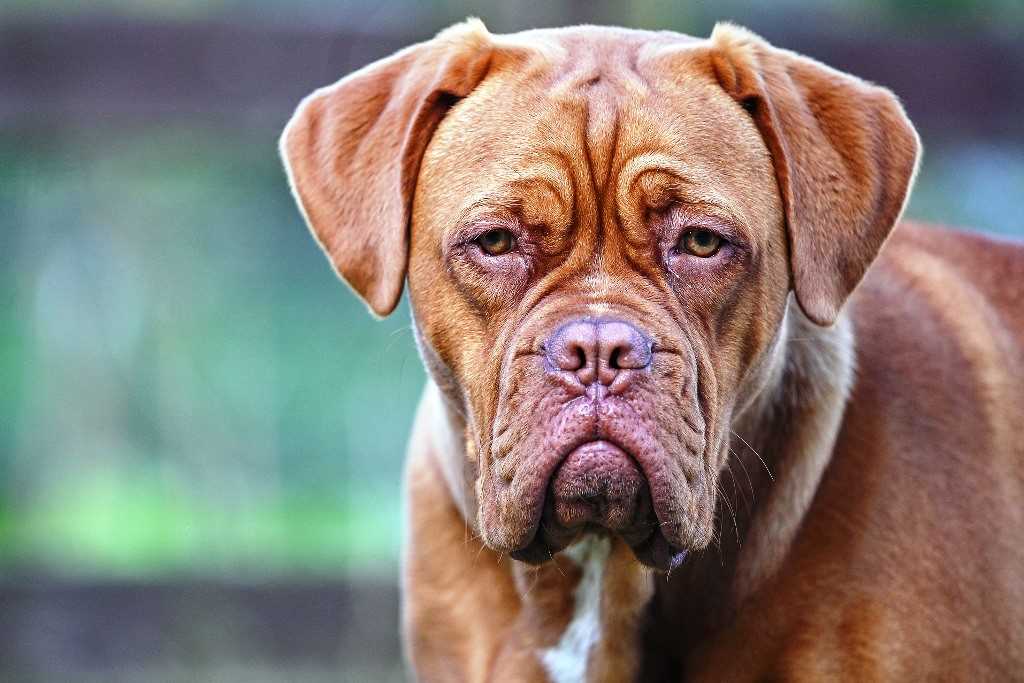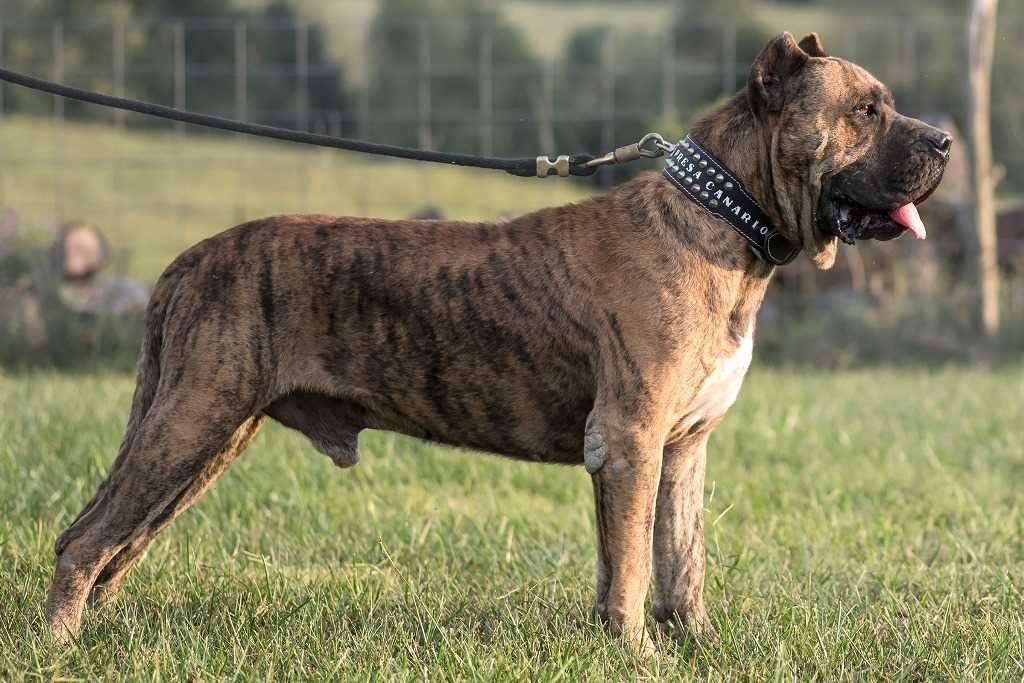The origin of the dog breed Dogue de Bordeaux is very old and not very certain. In fact, there are different currents of thought regarding the ancestors of this molosser. According to some, the first specimens originated from the Tibetan mastiff that accompanied the ancient Celtic populations in Europe. Others think that they are the direct descendants of the molossi of Rome.
Another school of thought sees these dogues as being derived from Great Danes, but not modern Great Danes, but dogs that accompanied the Indo-European population of Great Danes to the Old Continent during their migration, driven by the Huns. And finally, some theorists speculate that it derives from crosses between bullmastiffs and bulldogs.
What is certain, however, is that the Dogue de Bordeaux was born as a fighting dog. In the Middle Ages it was mainly used for this barbaric sport, which was very popular at the time. And the first documents in which this breed is found speak of specimens that roamed the area of Bordeaux, in France, around the 14th century, hence the name.
They were also used for hunting wild boar, wolves and bears. They were also shepherd dogs that protected and guided livestock. In addition, the butchers of Bordeaux attached carts to these dogs to transport quarters of meat from the slaughterhouse to the master’s shop. They also inhabited the courts of Europe because they excelled as guard dogs.
It was in 1863 that the first French dog show took place and the dogues de Bordeaux were entered under their current name. This breed almost went extinct after the Second World War, but it experienced a revival in the 1960s and now seems to be on the rise. Due to its very sympathetic appearance, it has been featured on television and also in the cinema. For TV, in the American series Tequila and Bonetti, and for the cinema in the film Turner and the Homeboy with Ton Hanks.
Character of the dog breed Dogue de Bordeaux
Despite being a dog created for fighting, its character has been improved over time, making it more docile, affectionate and faithful. It is now a well-balanced, sociable, affectionate and very attached to its owner, with whom it loves to spend as much time as possible, even adapting to small spaces in order to stay close to him. He has great patience with children, although an adult must always be there to supervise, given his size. He loves cuddles and lying at his owner’s feet and among the people he loves. Instead of a large outdoor space for him, he prefers a small place in the house with his own.
He is also a little lazy and a little sedentary, but needs stimulation and daily walks. With strangers he is very unfriendly and very mistrustful although he is not aggressive at all. It is an imposing dog, of large size, with a developed and evident musculature. Its main use, since ancient times, has been in defence and guarding, in which it is able to demonstrate all its courage and vigilance and protect its loved ones with all its courage and strength.
It is not a dog suitable for the inexperienced because it has a demanding character; it is very self-confident, stubborn and dominant, so its training requires wrist. It needs an owner who is the undisputed leader, otherwise it may believe itself to be the leader of the pack. It has a strong sense of territoriality and is not very friendly with other dogs. If, for example, you have an adult dog and you want to introduce another dog into your home, you may have considerable problems.
Appearance of the Bordeaux dog breed
The Bordeaux dog is a medium to large dog. The height at the withers for a male is between 60 and 68 centimetres with a weight of around 50 kilograms, the female usually a little less. It is a brachycephalic molossoid type, not very tall but massive, well balanced and imposing dog. Its body is very muscular but retains an overall harmonious whole. It is therefore powerful, stocky, imposing and proud, but is also agile and athletic. It still commands respect.
Its limbs are rather low, the forelimbs are very muscular, the hind limbs are robust, with strong bones and well angulated. The chest is broad and deep. The tail is very thick at the root, its tip preferably reaching the hock, without overtaking it.
The head of the Dogue de Bordeaux is voluminous, broad, rather short. It is furrowed with symmetrical wrinkles, deep and mobile depending on whether the dog is in attention or not. The truffle is brown, as are the edges of the eyelids and lips. The ears are relatively small and slightly darker in colour than the coat. The eyes are oval and spaced out.
The coat is short, fine and soft to the touch. The coat is single-coloured in all ranges of fawn, mahogany and isabella (shades between yellow and brown). Sometimes there are small white spots on the chest and the ends of the limbs. There are three varieties of mask on the muzzle: black mask, brown mask and no mask, so the coat of the latter is fawn and the skin and truffle appear red.
Health and care of the dog breed Dogue de Bordeaux
Unfortunately, the dogue de Bordeaux has a rather short average lifespan, reaching a maximum of around 10 years. It is vulnerable to several health problems that shorten its life: respiratory problems due to the shape of its muzzle, aortic stenosis, heart disease, epilepsy, stomach twisting and hip and elbow dysplasia, which fortunately are not fatal. He is also prone to skin infections due to his skin folds and abundant skin.
Its thin coat does not protect it much from the cold, so if you want to keep it outdoors it must have a dry, protected shelter where it can take refuge at night and on frosty days, although it would be better to keep it indoors at these times. It also suffers greatly from heat and is vulnerable to heat stroke. On hot days it needs cool shelter, plenty of water and to be monitored for heat stroke.
This dog takes up a lot of space and is particularly noisy, especially when asleep, as it snores and mutters almost non-stop, again due to breathing problems caused by the shape of its muzzle. He also drools a lot and frequently.
In terms of diet, large dogs, as well as having a large appetite, benefit from a different balance of minerals and vitamins, supporting different joint and cartilage needs. The Dogue de Bordeaux is prone to bloating and stomach problems; it is important to have smaller and more frequent meals to minimise the risk. These dogs have a tendency to put on weight, partly because they are prone to a certain laziness, and apart from a balanced and controlled diet, they also need a certain amount of exercise, compatible with their physical capabilities.
Caring for their coat is fairly easy. It is sufficient to brush it once a week to remove any dead hair. The skin folds on the face must be cleaned regularly to prevent possible infections.


